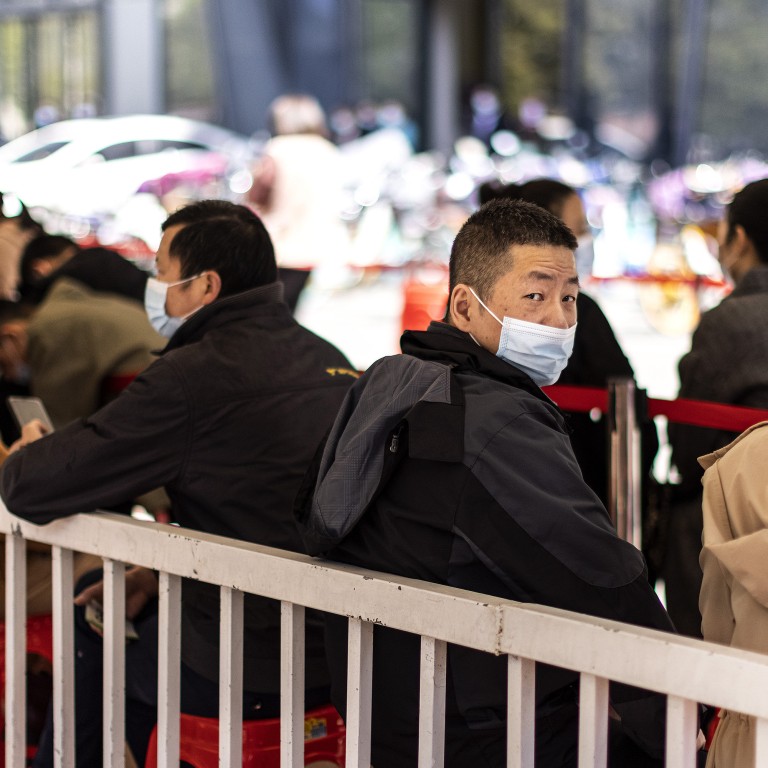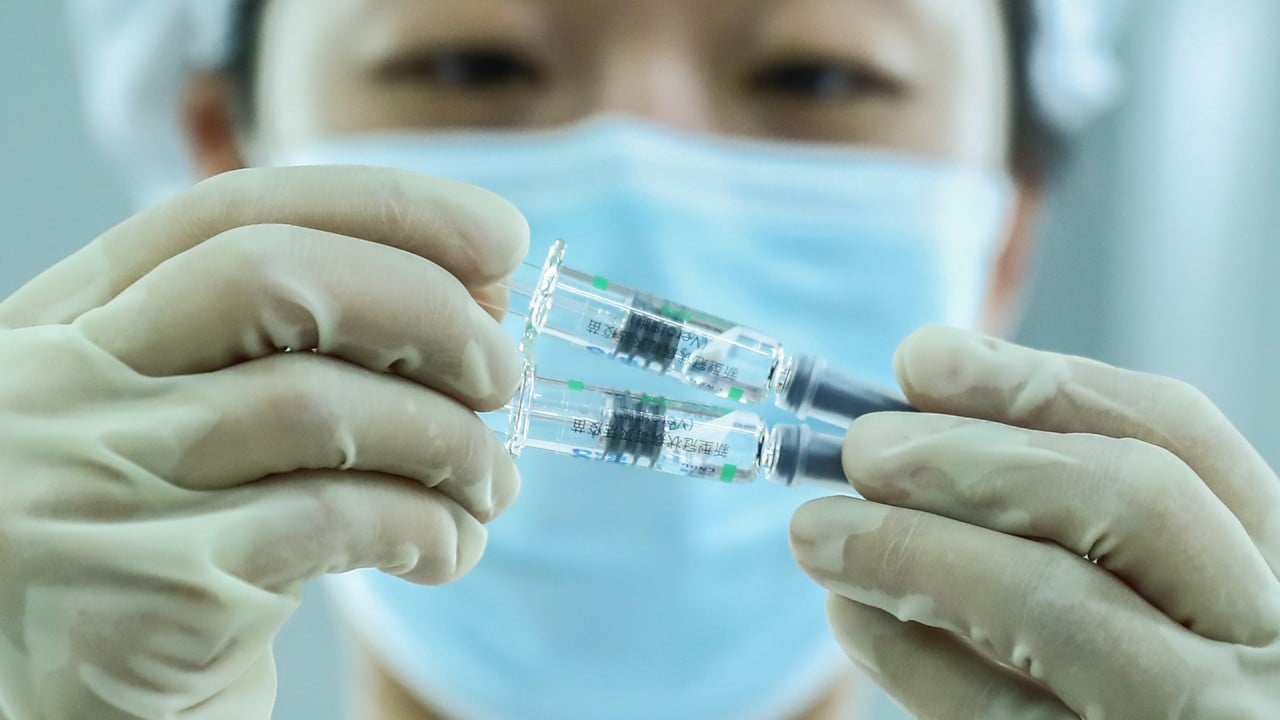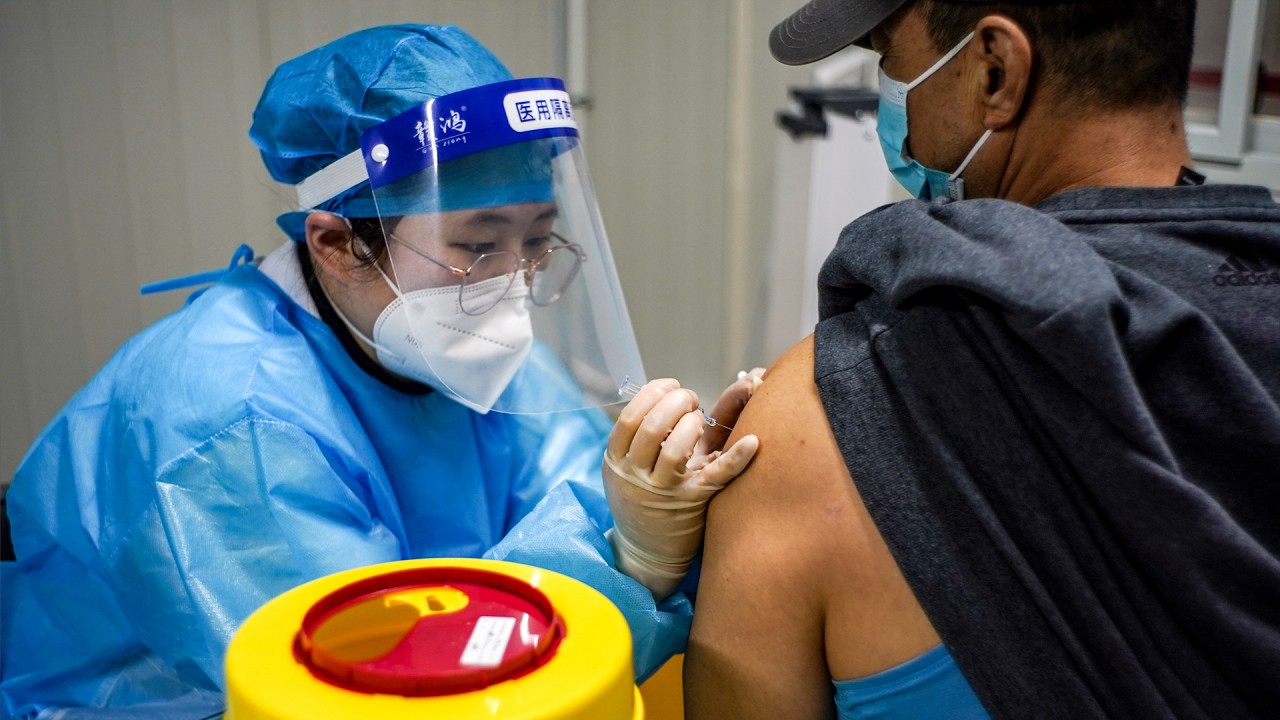
Chinese trial mixes Covid-19 vaccines using different technologies
- CanSino Biologics shot was given to participants in Jiangsu and they will later receive the Anhui Zhifei Longcom jab
- Similar trials are being carried out in Britain and Russia, with another awaiting approval in Italy
A trial began earlier this month to give a first dose of the adenovirus-vectored vaccine made by CanSino Biologics, followed by a protein subunit vaccine produced by Anhui Zhifei Longcom Biopharmaceutical, according to a clinical trials registration site run by a department under the US National Institutes of Health.
The Jiangsu Centre for Disease Control and Prevention is conducting the trial, with 120 people taking part in the eastern province, and they expect preliminary results in mid-June.
Similar trials are being carried out in Britain and Russia, and one is planned for Italy, to test whether it is possible to mix vaccines as a way to provide lasting immunity and more flexibility.
For now, Chinese health authorities do not recommend mixing vaccines that use different technologies, or sequential immunisation, but the guidelines state that people can be given different brands that use the same technology.
China has cheaper vaccine technologies joining the race to beat the pandemic
That compares to the 94 per cent efficacy reported for the Pfizer-BioNTech and Moderna vaccines, both of which use mRNA technology.
Wallace Lau Chak-sing, chair of rheumatology and clinical immunology at the University of Hong Kong, said it was important to carry out trials to determine whether and how vaccines could be mixed, and he cautioned against direct comparisons of efficacy rates.
“Various vaccine trials have been conducted in countries with a different Covid-19 status, at different times and on different study groups,” Lau said. “Different trials use different outcome measures for vaccine efficacy, so the safety and efficacy of various vaccines should not be casually linked.”
Virologist Jin Dong-yan, from the same university’s medical school, supported research to see if mixing vaccines could improve efficacy and potentially “help to build up stronger herd immunity”. In addition to combining two vaccines, further research could include using a higher dosage of the inactivated vaccines, or giving a third dose, Jin said.
China’s first mRNA vaccine ready for final stage trials overseas
The Anhui Zhifei Longcom vaccine is a subunit protein vaccine, meaning it uses purified pieces of the coronavirus that causes Covid-19 to trigger an immune response and booster shots are required. The authorities have said three jabs are needed for the Anhui Zhifei Longcom vaccine within six months of the first dose. It is still in phase 3 trials in Pakistan, Indonesia, Ecuador and Uzbekistan but has been authorised for emergency use in China and Uzbekistan. Anhui Zhifei Longcom has yet to report an efficacy rate or any phase 3 trial data.
CanSino’s single-shot vaccine uses an adenoviral vector to deliver a virus antigen and trigger an immune response. It had an efficacy rate of 65.7 per cent for preventing symptomatic cases in its interim phase 3 results. It has been approved for emergency use in Pakistan, Chile and Hungary and for conditional launch in China.
The CanSino-Anhui Zhifei Longcom trial will test the safety and immunity of healthy participants who are over 18 and have already had a CanSino shot. They will receive the Anhui Zhifei Longcom vaccine 28 or 56 days after the CanSino dose, while a placebo group will be given an influenza vaccine.
Of the other trials under way, Russian researchers are mixing two vaccines using adenoviral vectors – Sputnik V, made by the Gamaleya Research Institute of Epidemiology and Microbiology, and the AstraZeneca-University of Oxford vaccine.
In February, the University of Oxford began testing a combination of the AstraZeneca-Oxford vaccine and the Pfizer-BioNTech shot and the trial was recently expanded, with people given the first dose to randomly receive a shot of the same vaccine, the one made by Moderna, a mRNA vaccine, or by Novavax, a subunit protein vaccine which is awaiting approval.
Meanwhile, Italian researchers are waiting for regulatory approval to begin a trial to give people who have had the AstraZeneca-Oxford vaccine a different second shot – either the Pfizer-BioNTech, Moderna or Sputnik V vaccines.
Additional reporting by Simone McCarthy





